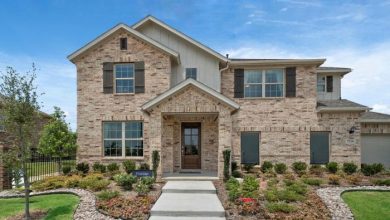Exploring Modern Warehouse Designs: Redefining Industrial Architecture

The modern landscape of warehouse architecture is continually evolving, with steel emerging as a dominant material for its versatility, durability, and cost-effectiveness. From streamlined functionality to innovative design concepts, contemporary steel warehouse structures are reshaping the industrial landscape. Delving into the intricacies of these designs offers insights into the amalgamation of aesthetics and functionality that define the modern warehouse building.
Sleek and Efficient Layouts
One of the defining features of modern warehouse designs is their emphasis on sleek and efficient layouts. These structures enhance operational efficiency while minimizing wasted resources by maximizing usable space and optimizing workflow. Through careful planning and strategic placement of support columns, modern warehouses can accommodate high-density storage systems and facilitate seamless material handling processes. The result is a space that not only meets the demands of today’s logistics industry but also anticipates future growth and scalability.
Innovative Structural Systems
Advancements in engineering technology have led to the development of innovative structural systems that push the boundaries of traditional warehouse design. Modern steel warehouses offer unparalleled flexibility and adaptability, from clear-span structures that eliminate the need for interior support columns to pre-engineered building solutions that expedite construction timelines. Innovative systems not only streamline the building process but also provide architects and designers with a blank canvas upon which to create unique and dynamic spaces tailored to the specific needs of their clients.
Integration of Sustainable Features
In response to growing environmental concerns, modern warehouse designs often incorporate sustainable features that reduce energy consumption and minimize environmental impact. From energy-efficient building materials and high-performance insulation to solar panels and green roofing solutions, these eco-friendly initiatives lower operating costs and position warehouses as responsible stewards of the environment. By integrating sustainable practices into their designs, architects and builders are helping to shape a more sustainable future for the industrial sector.
Emphasis on Visual Appeal
While functionality remains paramount, modern warehouse designs also significantly emphasize visual appeal. Gone are the days of bland, utilitarian structures; today’s warehouses are architectural marvels that seamlessly blend form and function. With sleek facades, contemporary finishes, and thoughtful landscaping, these buildings make a bold statement while complementing their surrounding environment. Whether in an urban setting or across rural landscapes, modern steel warehouses are testaments to the marriage of design and functionality.
Flexible Interior Spaces
In addition to their striking exteriors, modern warehouses boast flexible interior spaces that can be tailored to accommodate a variety of uses. These dynamic interiors offer endless possibilities, from open-concept layouts that foster collaboration and creativity to modular configurations that can be easily reconfigured to meet changing needs. Whether housing manufacturing facilities, distribution centers, or creative workspaces, these warehouses provide the versatility and adaptability required to thrive in today’s fast-paced business environment.
Conclusion
The evolution of the modern warehouse building represents a convergence of innovation, sustainability, and aesthetic appeal. By prioritizing efficiency, embracing innovation, and integrating sustainable practices, architects and builders are reshaping the industrial landscape one warehouse at a time. Modern warehouses set new standards for functionality and design excellence, from sleek layouts and innovative structural systems to sustainable features and flexible interior spaces. As the demand for efficient and visually appealing warehouse spaces continues to grow, the future of warehouse architecture looks brighter than ever before.



